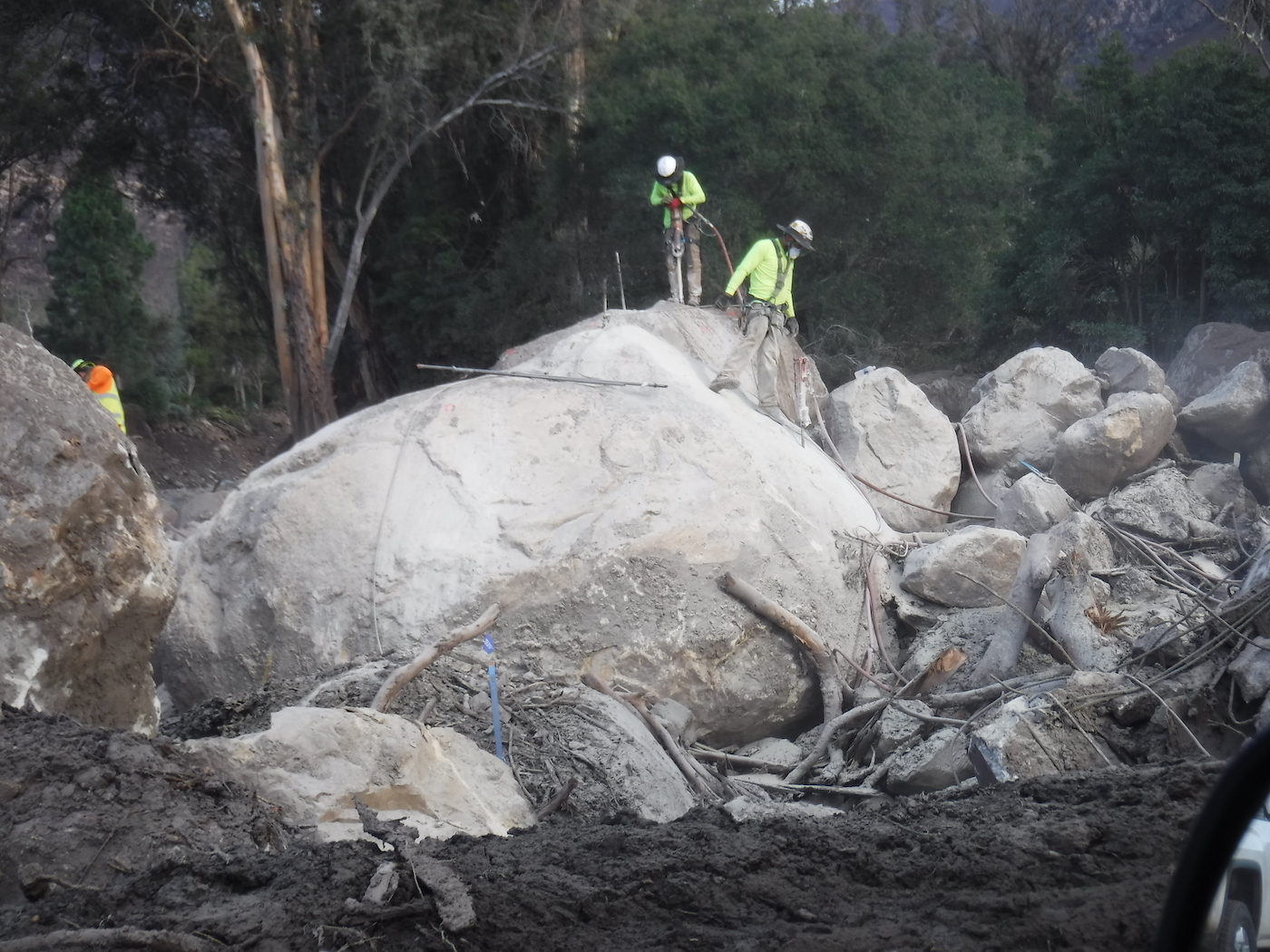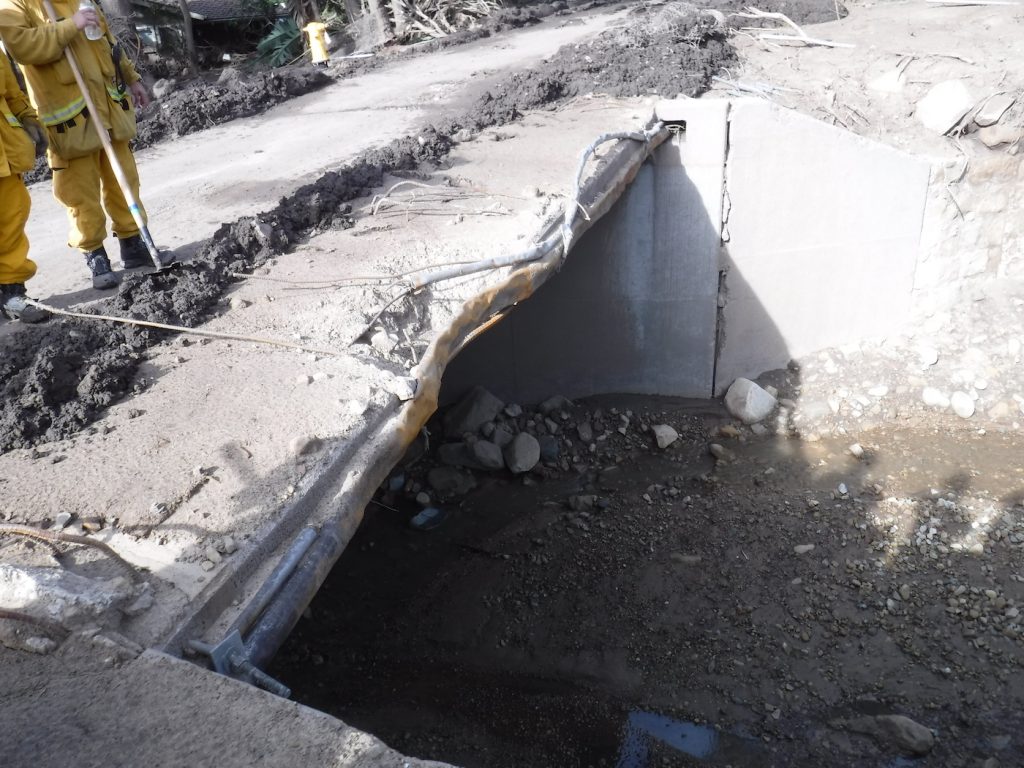MWD Clarifies Water Loss

Last week, Montecito Water District (MWD) officials released a statement and visual chart clarifying the contribution of released water during the 1/9 debris flow event. It had been widely reported that damage to the District’s infrastructure contributed millions of gallons of water to the flooding and debris flow that damaged hundreds of homes and took the lives of 23 people.
Depending on the data source – National Weather Service, County of Santa Barbara, or the National Oceanic Atmospheric Administration – rainfall met or exceeded a 200-year storm standard in the early-morning hours of January 9, dropping more than 0.5 inches in five minutes and 0.75 inches in 15 minutes. The rainfall was of extremely high intensity and short duration, resulting in significant amounts of runoff in the watersheds above Montecito. “The storm was of near record-setting intensity,” said officials from MWD.
According to MWD, natural watersheds that feed the creeks that flow through Montecito cover more than 11,000 acres and are of steep terrain, ranging from an elevation of zero feet at the beach to approximately 3,600 feet at East Camino Cielo. The Thomas Fire in December 2017, the largest in California history, stripped the vegetation from mountainous hillsides, leaving little or no earth-binding root structures in place, and reduced the water-absorbing properties of the soil. Preliminary analysis indicates that nearly 200 million gallons of rainfall accumulated within the watershed during the first 15 minutes of the storm. In addition, the peak rainfall runoff intensity within the watershed has been estimated to have exceeded 14 million gallons per minute.
The high-intensity rainfall caused mud and debris flows at the highest elevations in the watershed, which accumulated while traveling downhill. This caused devastation within and throughout Montecito, including damage to District infrastructure. Water, mud, and debris overflowed debris basins and continued downstream, causing damage to the District’s transmission pipeline (“highline”) at multiple locations. Damage occurred at numerous creek crossings, including San Ysidro, Cold Spring, Hot Springs, Buena Vista, Romero, and Toro Canyon. Overall, District infrastructure was damaged in more than 300 locations, resulting in leaks through which a gradual loss of water occurred.
Review of MWD system data confirms that the District had approximately 5.8 million gallons of water stored in seven water storage tanks at the start of the storm on January 9. The 5.8 million gallons of water were lost over the course of 11 hours, between 3 am and 2 pm. The loss was gradual, and leakage was spread over a geographically wide area and across the District’s distribution system through nine transmission pipeline breaks, 15 distribution main breaks, 25 sheared-off fire hydrants, and approximately 290 damaged service connections; in total, there were more than 300 leaks.

As compared to the peak rainfall intensity of 14 million gallons per minute, the District’s peak combined release rate was a mere 24,000 gallons per minute – less than one quarter of one percent (<0.25%) of the estimated peak rainfall intensity that fell during the storm. At the time of the first reports of destruction at 3:57 am, the total accumulation of rainfall is estimated at nearly 200 million gallons, while approximately 300,000 gallons are estimated to have been lost from the District’s water system by that time, again less than one quarter of one percent (<0.25%) of the rainfall figures. To put this amount in perspective, 300,000 gallons are a bit less than half the total volume of an Olympic-size swimming pool.
Critical District staff sheltered in place during the storm, and crews were on site by 6 am January 9, inspecting for damage, shutting down leaks, and making repairs. While District access was prohibited in some areas due to rescue operations and debris, staff worked rapidly to organize a large team to assist and was able to secure needed materials without delay. Within 30 days of the event, the District had restored full water service to the Montecito community, including all work to access, repair, and disinfect its heavily damaged facilities.
“The amount of our water lost that day, 5.8 million gallons, is a very small amount compared to the District’s annual production,” a rep from the District told us. “It represents about a day and a half of water production and will not have any impact on water supply.”
The release was provided by the District to help facilitate customer understanding of the storm’s impacts.







